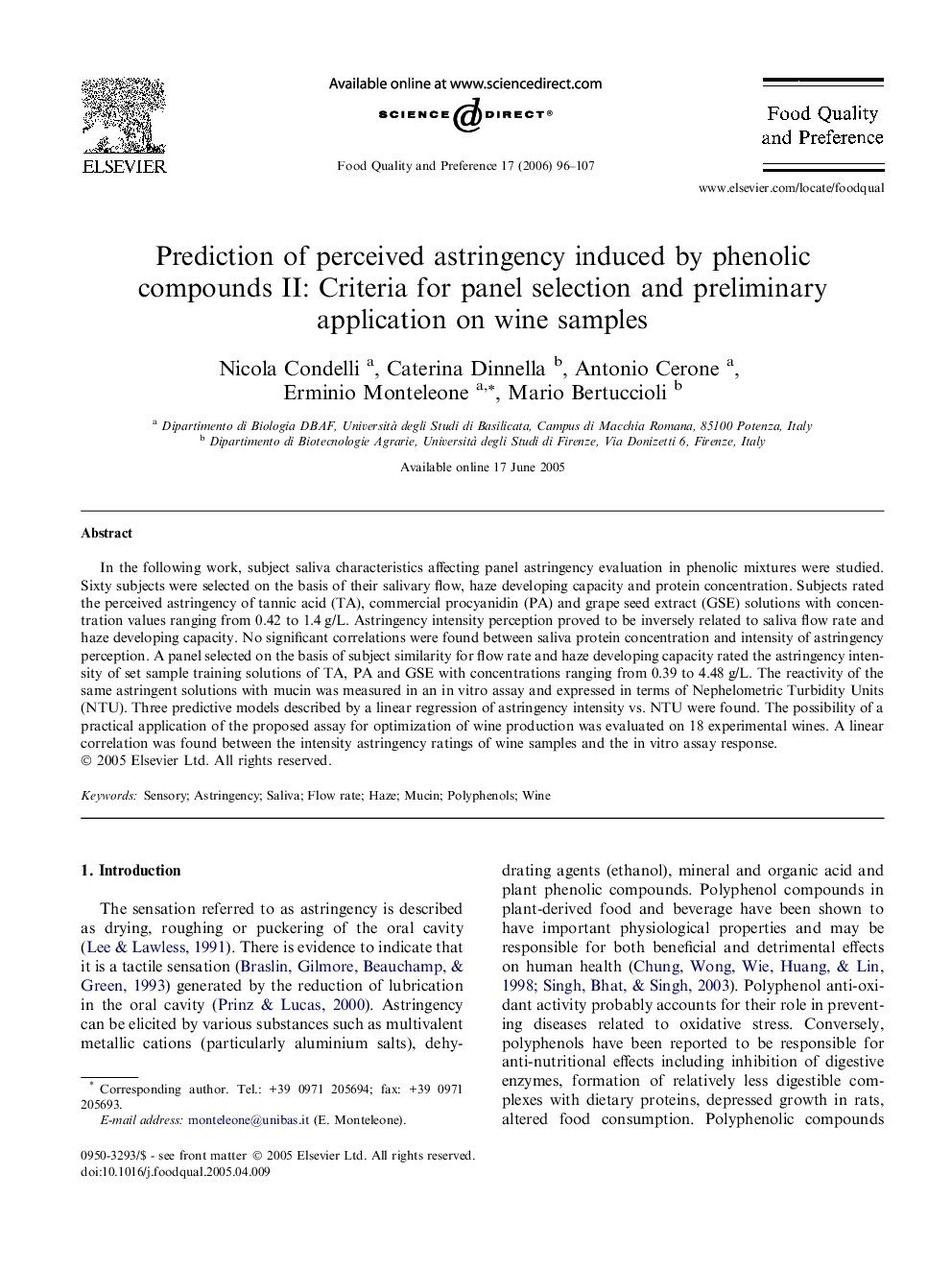| کد مقاله | کد نشریه | سال انتشار | مقاله انگلیسی | نسخه تمام متن |
|---|---|---|---|---|
| 4318350 | 1613170 | 2006 | 12 صفحه PDF | دانلود رایگان |

In the following work, subject saliva characteristics affecting panel astringency evaluation in phenolic mixtures were studied. Sixty subjects were selected on the basis of their salivary flow, haze developing capacity and protein concentration. Subjects rated the perceived astringency of tannic acid (TA), commercial procyanidin (PA) and grape seed extract (GSE) solutions with concentration values ranging from 0.42 to 1.4 g/L. Astringency intensity perception proved to be inversely related to saliva flow rate and haze developing capacity. No significant correlations were found between saliva protein concentration and intensity of astringency perception. A panel selected on the basis of subject similarity for flow rate and haze developing capacity rated the astringency intensity of set sample training solutions of TA, PA and GSE with concentrations ranging from 0.39 to 4.48 g/L. The reactivity of the same astringent solutions with mucin was measured in an in vitro assay and expressed in terms of Nephelometric Turbidity Units (NTU). Three predictive models described by a linear regression of astringency intensity vs. NTU were found. The possibility of a practical application of the proposed assay for optimization of wine production was evaluated on 18 experimental wines. A linear correlation was found between the intensity astringency ratings of wine samples and the in vitro assay response.
Journal: Food Quality and Preference - Volume 17, Issues 1–2, January–March 2006, Pages 96–107